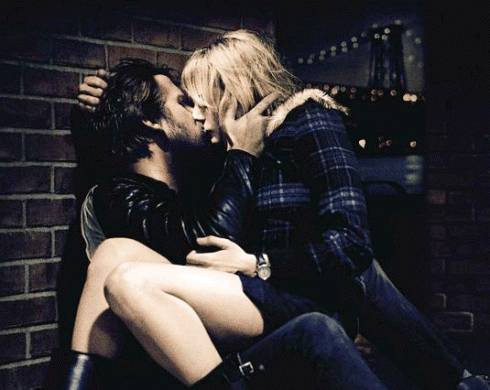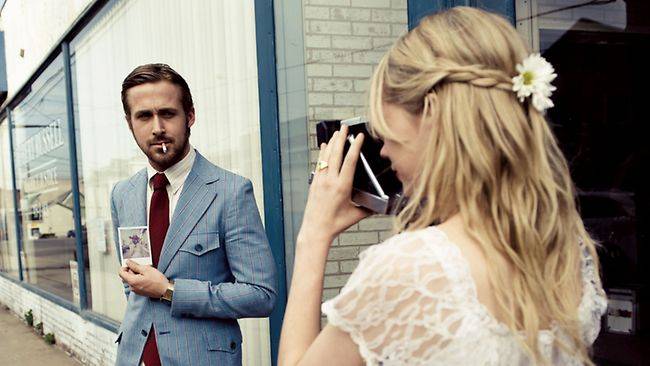 As Pablo Neruda says in his famed poem, “Loving is so short/forgetting is so long”…but how do you really know when its time to let go and move on from the one you love? The beginning of any love story is usually heralded with romance, excitement, hope, and possibilities. But, what happens when the romance wanes, the excitement dies down, hope is lost, and possibilities are now limited? Blue Valentine attempts to boldly and unflinchingly answer those questions.
As Pablo Neruda says in his famed poem, “Loving is so short/forgetting is so long”…but how do you really know when its time to let go and move on from the one you love? The beginning of any love story is usually heralded with romance, excitement, hope, and possibilities. But, what happens when the romance wanes, the excitement dies down, hope is lost, and possibilities are now limited? Blue Valentine attempts to boldly and unflinchingly answer those questions.
The film centers on one couple, Cindy and Dean, who live in Pennsylvania with their young daughter, Frankie.
Cindy is a harried, discontented woman who seemingly finds at least some satisfaction in her nursing job, despite — or perhaps because of — her overtly flirtatious boss. She struggles to juggle the demands of home and motherhood. She loves her young daughter, but is resentful of dealing with her “second child” husband Dean. 
Dean is a cheerful house painter who lacks any sense of ambition and cites his major job perk as being able to drink while working. Despite this, he is a devoted father, effusive in his adoration for his beloved daughter. Dean cannot seem to understand Cindy’s constant frustration with him and is desperate for love and affection from his wife.
Despite Cindy’s insistence that she does not want to spend the night in a “cheesy sex motel,” Dean arranges just that, booking the “Future Room” for the evening after safely dispatching Frankie with her grandfather. In the strange windowless room of silver, mirrors, and a vibrating round bed, Cindy and Dean drink way too much and have cringe-worthy, painfully awkward sex (that narrowly escaped an NC-17 rating by the MPAA).
At an all new low point, Dean and Cindy are forced to perform an autopsy of their relationship. As they sift through the rubble of the present, we are treated to flashbacks of their past as a couple — their unexpected meeting, moments of romantic courtship, and the pivotal decisions that have shaped their destiny and will ultimately determine their present circumstance.
Interesting trivia surrounds the film. Blue Valentine was originally set to film in the spring of 2008 but due to the death of Heath Ledger, Michelle Williams’ former fiancée and father to her daughter Matilda, the director, Derek Cianfrance delayed the film to allow Williams time to grieve instead of replacing her with another actress. Michelle Williams’ performance justified the delay, as she was Oscar nominated for her role — and many feel Ryan Gosling was overlooked for his equally powerful performance.
Another interesting fact revolves around the filming. In order to prepare for their roles, Michelle Williams and Ryan Gosling shared a rented house together for a month. They were supposed to try to function as a couple by cooking, cleaning, shopping — and learning how to get on each other’s nerves. The tension-fraught “fight” sequences between the couple in the film are a result of the time spent together and are largely improvised.
At times, Blue Valentine plays like a horror film, as one’s natural reaction is to cringe and avert their eyes from the painful evolution of the characters on screen. At its heart, however, the film is an achingly beautiful, haunting love story that forces us to examine our own relationships and feelings about love and romantic possibilities.
Blue Valentine is playing exclusively at The Art Theater for one week only — don’t miss it!
1hr 54min — Rated R — Drama








